Understanding Tooth Discoloration
Tooth discoloration refers to the staining or darkening of your teeth. You may develop discolored teeth for a number of reasons, some unavoidable such as aging, trauma or disease. Other causes are preventable such as poor oral hygiene or smoking. Tooth discoloration in many cases is considered a cosmetic concern and may not affect your oral health but can negatively affect your confidence and self-esteem.
Types of Tooth Discoloration
Tooth discoloration can be classified into two main types:
Extrinsic Discoloration: This type of discoloration affects the outer surface of your teeth (the enamel). Exposure to certain foods and beverages can cause this type of tooth discoloration
Intrinsic Discoloration: This type of discoloration starts on the inside of the tooth and affects the dentin which is the layer underneath the enamel of your teeth. Causes can include dental trauma and even certain medications.
Read more about stained teeth and different types of stains.

Common causes for teeth discoloration
Dark Foods or Beverages: Things such as coffee, tea, berries, red wine and soy sauce can stain your teeth over time.
Smoking/Other Tobacco Use: Research shows that people who smoke are more susceptible to tooth discoloration compared to those who do not.
Poor Oral Hygiene: Stains can stick to dental plaque and if not removed with regular oral hygiene can increase the chance of tooth discoloration.
Excessive Fluoride: In appropriate amounts, fluoride is a great way to protect the teeth from cavities. However, people who consume high levels of fluoride during childhood may develop fluorosis which is a condition that results in white spots on your tooth’s enamel.
Other causes that are unavoidable include:
Genetics: Natural tooth colour, brightness and translucency often vary from person to person.
Dental Trauma: Falls, car crashes and sports-related injuries can cause trauma that results in discoloration.
Aging: As you age, your tooth’s enamel wears down resulting in exposure of the dentin layer underneath the enamel. The dentin has a yellowish hue which can result in your teeth appearing slightly discolored with age.
Dental Treatments: Some dental materials such as the silver amalgam used in metal fillings can make your teeth appear somewhat gray in colour. Root canal therapy can also cause tooth discoloration in some cases.
Certain Diseases: Some health conditions can cause discoloration such as liver disease, celiac disease, calcium deficiency, eating disorders and metabolic diseases.
Medications: Certain medications such as antihistamines or blood pressure medication can result in discoloration. In addition, adults who took tetracycline or doxycycline antibiotics during childhood may have tooth discoloration.
Cancer Treatments: Chemotherapy or head and neck radiation therapy can cause tooth discoloration
Different Colours and Meanings
Yellow stains are usually due to eating and drinking dark coloured foods or beverages. It can also be an indication that you need to improve your oral hygiene routine.
Brown stains are a result of smoking or using chewing tobacco products. If you notice brown stains or small holes in your teeth, you may have untreated tooth decay.
Purple stains are common with people who frequently consume red wine.
Gray stains may indicate that the nerve inside of your tooth has died. This can be caused by dental trauma.
White spots on your teeth may indicate dental fluorosis. This means that high levels of fluoride were consumed during tooth development.
Black spots on your teeth typically signal severe decay of the tooth
How do dentists treat discolored teeth?
Teeth Whitening
Dentists may offer in office or at home teeth whitening treatments. These methods often use hydrogen peroxide or carbamide peroxide to break up stains and remove them from the teeth. Professional whitening works best on surface stains (extrinsic), but some products may also remove deep stains (intrinsic) as well. Cosmetic bleaching in a dental office normally takes about an hour to complete while some at home whitening kits require daily treatments for up to six weeks. It is important to speak to your dentist about your options to decide which one is best for you.
Dental Bonding
If the tooth discoloration doesn’t improve with whitening, your dentist may recommend dental bonding. This procedure involves applying tooth coloured resin to conceal the discoloration of the teeth and may not be the best option if several of the teeth are discolored. Bonding is much more affordable compared to other options such as porcelain veneers and normally requires a touch up every five to seven years.
Porcelain Veneers
If there are several discolored teeth that do not improve with whitening, porcelain veneers is an option to consider. Porcelain veneers are tooth coloured ceramic shells. A dentist will permanently bond (glue) them to the front surfaces of your teeth to camouflage discoloration or cosmetic flaws such as chips in the tooth. Veneers are not reversible and must be replaced every five to fifteen years.
Dental crowns
Tooth discoloration can sometimes indicate cavities. If you have weak or decayed teeth in addition to discoloration, your dentist may recommend a dental crown. A crown is a tooth shaped cap that fits over your tooth that protects it from further damage. Dental crowns can help improve the health and function of your teeth as well as the appearance.
Over The Counter Treatments
You can find over the counter teeth whitening treatments in most stores that sell oral health products. These products include rinses, pastes, strips and bleaching trays. While some are safe and effective, others can damage your enamel and make your teeth more susceptible to cavities and erosion. It is important to consult with your dentist before using any teeth whitening treatment. Some ingredients to avoid include baking soda, activated charcoal and citric acid.
Prevention
While some stains are unavoidable, there are things we can do to reduce the risk of everyday tooth discoloration:
Visit your dentist for routine cleanings and examinations.
Brush your teeth two to three times a day using a soft-bristled brush and ADA approved fluoridated toothpaste
Floss between your teeth on a daily basis
Limit foods that stain the teeth such as coffee, tea, wine and cola
Stay hydrated and rinse your mouth after consuming beverages that can cause stains
Quit smoking
Call to Action
If you’re experiencing teeth stains, don’t wait for it to worsen. Contact our Etobicoke Dentist – Thorncrest Dental today to schedule an appointment and get the professional care you need to prevent further complications.




